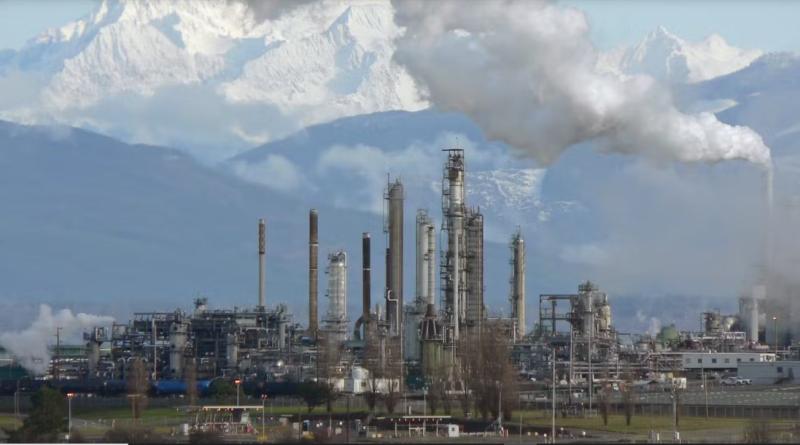Fossil fuel reduction targets should be part of every climate plan

The United States, Canada and the United Arab Emirates are among those who account for close to half of global oil and gas production and are focusing on a slew of mitigation measures except for reducing production.
Two months ago, a United Nations official called out Canada for being “one of the largest expanders of fossil fuels last year” as she introduced Prime Minister Justin Trudeau to those assembled at the Climate Ambition Summit in New York. In response, the Prime Minister pledged to cap emissions from Canada’s oil and gas sector and to “increase our ambition at every level”. What was missing from his speech, however, was any mention of reducing oil and gas production itself.
This silence on fossil fuel production is symptomatic of many governments. The United States, Norway, Qatar, Saudi Arabia, and the United Arab Emirates - who together with Canada make up the Net-Zero Producers Forum and account for close to half of global oil and gas production - are similarly focusing on a slew of mitigation measures except for reducing production.
Recently, the United Kingdom, the first major economy to pass a net-zero emissions law, gave the greenlight for the country’s largest untapped oilfield to be developed.
But omitting reduction targets for coal, oil, and gas production from a climate plan is like trying to drive with the rearview mirror missing. We need to ensure that as we scale up renewable energy, we are also phasing out fossil fuels.
A testament to this oversight is the persistence of the fossil fuel “production gap”, which has remained largely unchanged since we began to track it in 2019. As we reveal in the fourth edition of the Production Gap Report, despite 151 countries having announced net-zero ambitions, when it comes to fossil fuel production targets, governments’ plans and projections would still lead to, in 2030, more than double the global levels consistent with limiting warming to 1.5°C.
Stranded assets?
Such production targets and supporting policies are helping to legitimize and enable continued developments in fossil fuel projects worldwide. However, many of these are now at risk of becoming stranded assets as the world decarbonizes and global demand for coal, oil, and gas are expected to peak within this decade, even without new climate policies. At the same time, they increasingly call into question the credibility of governments’ net-zero commitments - and humanity’s chance - to limit global warming to 1.5°C.
According to the mitigation scenarios compiled for the Intergovernmental Panel on Climate Change’s Sixth Assessment Report, rapid and substantial reductions in global coal, oil, and gas production and consumption are needed between now and 2050 to keep the 1.5°C goal in reach.
These fossil fuel reductions occur in tandem with other key climate mitigation strategies that many governments have readily pledged to achieve, such as improving energy efficiency, expanding renewable energy, halting deforestation, and reducing methane emissions from all sources.
If we were to take a precautionary approach and only look to mitigation scenarios that rely on limited levels of negative emissions technologies, they suggest a near-total phase-out of coal production and use by 2040 and reductions in oil and gas combined by around three-quarters by 2050 from 2020 levels globally. Failure of such measures to become available at the scales assumed in these scenarios would necessitate even faster and deeper cuts.
One could also argue that the fact that fossil fuel-driven air pollution is causing millions of people around the world to fall ill and die prematurely every year should be enough reason to accelerate a fossil fuel phase-out in every country.
Just energy transition at risk
It is not surprising that fossil fuel production remains a political sensitivity. For over a century, fossil fuels have powered our society. Consequently, most governments still view coal, oil, and gas as sources of geopolitical power and development. But fundamentally, it is energy that is central to the fabric of our society, not fossil fuels. And we must now reckon with the undeniable truth that our fossil fuel dependence comes at too high a price: coal, oil, and gas must be effectively phased out to secure a safe and liveable present and future.
The lack of attention to a coordinated phase-out of fossil fuels and phase-in of clean energy is putting a well-managed and equitable energy transition at risk. At a local level, this will likely lead to negative outcomes such as economic disruptions and cleanup obligations falling to the state, as evidenced by abrupt coal mining closures without adequate just transition planning in the US.
At a global level, our analysis finds that the trajectories of coal, oil, and gas production being planned by 10 high-income countries alone would already exceed 1.5°C-consistent global levels by 2040. However, an equitable transition away from fossil fuel production must recognise countries’ differentiated responsibilities and capabilities.
At 1.1°C of global warming, climate devastation is already manifesting in every corner of our planet, from the island of Maui to the city of Beijing. All countries must take ambitious and concrete actions to diversify or leapfrog their energy needs and economies away from fossil fuels to cost-competitive renewables and alternative sectors.
The task is unprecedented but not impossible. It will require political will, sustained implementation, and international cooperation, especially for governments with greater transition capacity to lead and provide finance and support for lower-income countries.
As a starting point, at the upcoming climate negotiations and beyond, governments must acknowledge the true nature and extent of the challenge at hand – the need to phase out the emissions and production of all fossil fuels – and set near- and long-term reduction targets and implementations towards this goal. Otherwise, how can we even begin to succeed?





